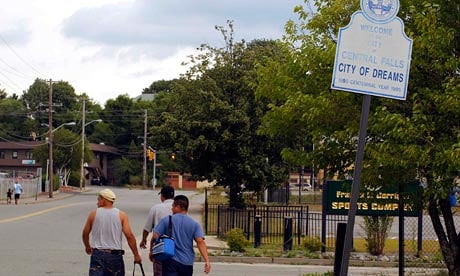Rhode Island’s debts have been woefully underestimated, with alarming consequences for cities across the US, says report.
The debt crisis engulfing local US governments could be even worse than first feared after a new report said Rhode Island’s massive pension debt may have been severely underestimated.
The report comes amid a spate of municipal bankruptcies across the US. This week, Jefferson County in Alabama filed for bankruptcy protection, the largest municipal collapse in US history. Pennsylvania’s capital, Harrisburg, filed for bankruptcy in October.
Rhode Island, America’s smallest state by area, is currently in the midst of an unparalleled economic crisis. One town, Central Falls, has already filed for bankruptcy and others are expected to go the same way as the state wrestles with massive pension liabilities and declining tax incomes.
Rhode Island is seen by some as an early indicator of a widening financial crisis in local and state finances where pension costs, bad loans and falling revenues are threatening to bankrupt cities across the country.
Ten cents of every state tax dollar now goes to retired public workers, according to official figures. But the real situation is far worse, according to a study by George Mason University. Researchers Eileen Norcross and Benjamin VanMetre said the real size of the state’s pension debts are double the official figures.
According to Rhode Island’s calculations, the unfunded liabilities for their local and state workers’ pensions total $9.2bn. Unfunded liabilities are the costs a pension plan faces after its assets have been stripped out. Norcross, a municipal pension expert who has testified to Congress on America’s pension crisis, calculates that the real bill is $18.8bn.
“The government figures are based on assumptions that just don’t hold up,” she said. “They are based on expected returns of about 8% on their assets and they are not getting that.”
Rhode Island and all other US states arrive at this figure using a hotly disputed formula drawn up by the government accounting standards board(GASB), which is currently reviewing the way it reports pensions by state and local governments. The official formula allows pension funds to project a 7.5% growth rate, cut from 8.25% last year, but that figure has been criticised by many economists, including Donald Kohn, former vice chair of the Federal Reserve Board.
Norcross and VanMetre used the 3.7% rate on low-risk Treasury bonds to make their calculation, a suggestion that has been championed by other economists, with alarming resullts. Under their calculations the real liability Rhode Island faces on pension plans for its teachers leaps from $4.1bn to $7.2bn, the police liability leaps from $29m to $50.6m.
Norcross said cities including Chicago, Los Angeles, San Francisco, Cincinnati, Boston and Philadelphia all had issues similar to Rhode Island, and were using the same inflated assessment to calculate their pension liabilities. “It’s depressing and it’s very frightening, but we have got to look at the real numbers,” she said.
Fear that states will cut local workers pensions plans have led to a dramatic rise in early retirements. Across the US, the number of people taking early retirement in the hope of avoiding cuts to their benefits has surged. In San Jose, union leaders representing firefighters and police are heading to court over proposals from city officials to cut their benefits.
“I understand why people would do that but it can undermine the system even further,” said Norcross.
Michael Hodin, a senior fellow at thinktank the Council of Foreign Relations, said the pensions crisis was a global phenomenon as responsible for Italy and the Eurozone’s economic woes as it is for Rhode Island’s.
“Everone is underestimating the structural challenges of an ageing population,” he said. “The core of this financial meltdown we are seeing is that we can’t afford 20th-century social welfare with 21st-century demographics.”
Source: The Guardian
 Global Coalition On
Global Coalition On 